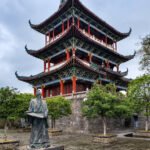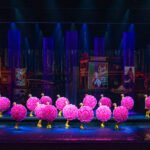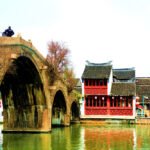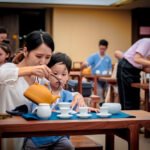The joy of climbing high. The elegance of rituals and music. The elegance of leisure accommodation. All are in Nishan. Culture educates people and conveys the truth. The revival of excellent traditional Chinese culture has caught up with the best era. It is heard that Nishan Sacred Land in Qufu is holding an event where a thousand pieces of Hanfu can be worn for free. Such a grand plan is used to welcome the Spring Festival. Miguo, who has always been longing for the Hanfu experience, can’t sit still. She actively asks her parents to take her to Nishan Sacred Land again to experience traveling through time and space, dressing up in Hanfu, and then understanding the connotations of Confucian culture and worshipping the supreme sage and first teacher. Take a path of cultivating virtues and respecting saints in Confucianism and live a lifestyle of knowing books and being civilized. Naturally, such a request from a daughter should be satisfied. Let’s go. As the hometown of Confucius and the birthplace of Confucian culture, Nishan Sacred Land in Qufu can be reached by driving for more than two hours from Jinan. Since there have been many visits to Nishan Sacred Land, but one can still come again and again. Indeed, it is because of its great charm. This charm ranges from the large-scale park design to the magnificent buildings and then to the rich historical and cultural displays hidden in the buildings. Everything is exquisite and attracts people. The world’s tallest 72-meter statue of Confucius is shaped according to the positioning of being amiable and respectable, a teacher, an elder, and a wise man. Standing on the mountain top, it commands the commanding height of the cultural space of Nishan Sacred Land. Dressed in splendid attire, Miguo, with full sincerity and respect, worships the first teacher and hangs a tag with her New Year wish at the blessing place next to the holy statue. Hopes will surely come true. The Great Learning Hall is the most magnificent building in Nishan Sacred Land. It is the perfect combination of Confucian wisdom and modern architectural art. Entering the Jixian Hall, what catches the eye is the way of the Great Learning. The eighty-one steps form a walkway. On both sides, there are eternal candles, representing Confucius holding high the way of life. The ceremony of the way of the Great Learning is divided into initial advancement, further advancement, third advancement, and final advancement, which are respectively the golden mean way, the way of benevolence, the way of goodness, and the way of integrity. From the Pan Shui Bridge to the Supreme Sage Square, and from the Lishi Gate to the Golden Sound and Jade Vibration, Miguo measures the steps of the sage little by little with her own feet. The higher one goes, the more humble and respectful one feels in the heart. A journey of a thousand miles begins with a single step. Where the heart leads, one goes with plain shoes. Through the solemn ceremony, Miguo and her mother follow the steps of the praising official. Using philosophical thinking as a ladder, they ascend step by step, following step by step, from the shallow to the deep. In the magnificent palace hall, tourists are quiet, as if traveling back to the profound ideological space of Confucianism and involuntarily recalling and reflecting. Coming up along the steps that inspire admiration. Opposite the gate and in the center, the way of the Great Learning that Confucius adhered to throughout his life is hanging high. On the wall is written: The way of the Great Learning lies in manifesting illustrious virtue, renovating the people, and abiding in the highest good. This is the pursuit of the three outlines and eight items of Confucianism and also the key to opening the door of Confucianism.
Every visitor who comes here will follow the steps of study, climbing step by step, entering the hall, and appreciating the profound meaning of Confucian classics. The Seventy-Two Sages Corridor, with a depth of a hundred meters and a height of sixteen meters, is particularly spectacular. Two rows of tall statues come face to face, looking at these vividly carved clay sculptures, as if one can hear them discussing the principles of ‘benevolence’ or the policies of governing the country. There might be elders teaching patiently, or children listening with their heads tilted, just by walking, one feels as if they have returned to that time. Here, one can also enjoy performances of ancient music with the se and sheng, the elegant ancient music instantly takes one’s thoughts back a thousand years. The se refers to a traditional Chinese plucked string instrument, while the sheng refers to an ancient Chinese wind instrument. This is a high form of etiquette, used to express the joy of marriage or respect for guests. Listening to such elegant music, strolling through the corridor, looking at the sculptures of the sages, one feels as if they have become a part of it, able to converse with them. Speaking of Confucius, one cannot avoid the concept of ‘benevolence’, the largest Benevolence Hall in the university is centered around this idea. Here, every day, a heart-stirring ‘Return to Benevolence’ light show is staged, with meticulously designed sound and light effects, fully utilized in this massive ‘classroom’ covering an area of three thousand square meters. As the music gradually fades, the lights in the hall also light up one by one, the applause is long-lasting, as if completing a spiritual baptism. The charm of Confucianism, a fleeting moment of a thousand years between the sounds. The harmony of ancient and modern, the interweaving of sound, color, light, and electricity appear before the eyes. Evergreen through the ages, the true meaning lies within the sacred land of Nishan. ‘Return to Benevolence’, in the moment of writing, one forgets to argue. Here, one can receive a pen and calligraphy paper, read the Analects of Confucius, and copy the classics, accompanied by elegant ancient music, sinking into the heart to outline the characters, and instantly the heart becomes calm. The four halls of ‘Righteousness,’ ‘Etiquette,’ ‘Wisdom,’ and ‘Faith’ surround the Benevolence Hall, also representing the four directions of the Azure Dragon, White Tiger, Vermilion Bird, and Black Tortoise, whether it is murals, roofs, or sculptures, every design reflects the content of Confucius’s thoughts. The beautifully dressed Hanfu-clad Migo wanders in every hall, the camera switches to a wide-angle lens, a variety of colors are always photogenic. Having satisfied the visual and auditory shock, of course, one must also make some exquisite items with their hands. In the Hundred Crafts Workshop, Migo, dressed in Hanfu, is sitting and experiencing one of the many handicraft projects here, movable type printing, oil roller ink, attach a piece of Xuan paper, and with a few light taps, one gets a movable type edition of the famous sayings from the Analects of Confucius, under the sunset light, it feels like being surrounded by classics with infinite warmth. There are certainly more than one project in the Hundred Crafts Workshop, such as hand-painted round fans, wooden plate New Year paintings, paper-cut printing projects, especially children must be unable to resist liking, they must come and experience it.
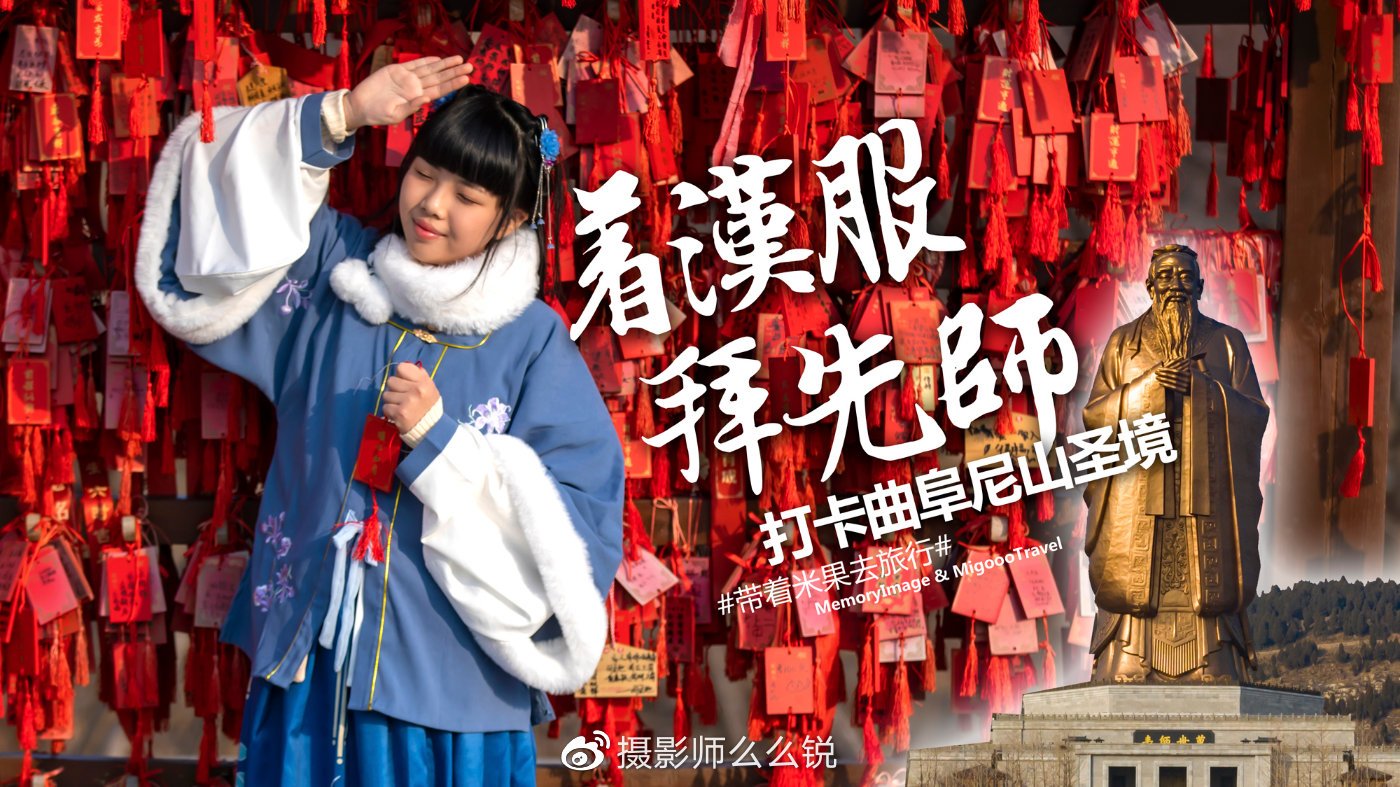
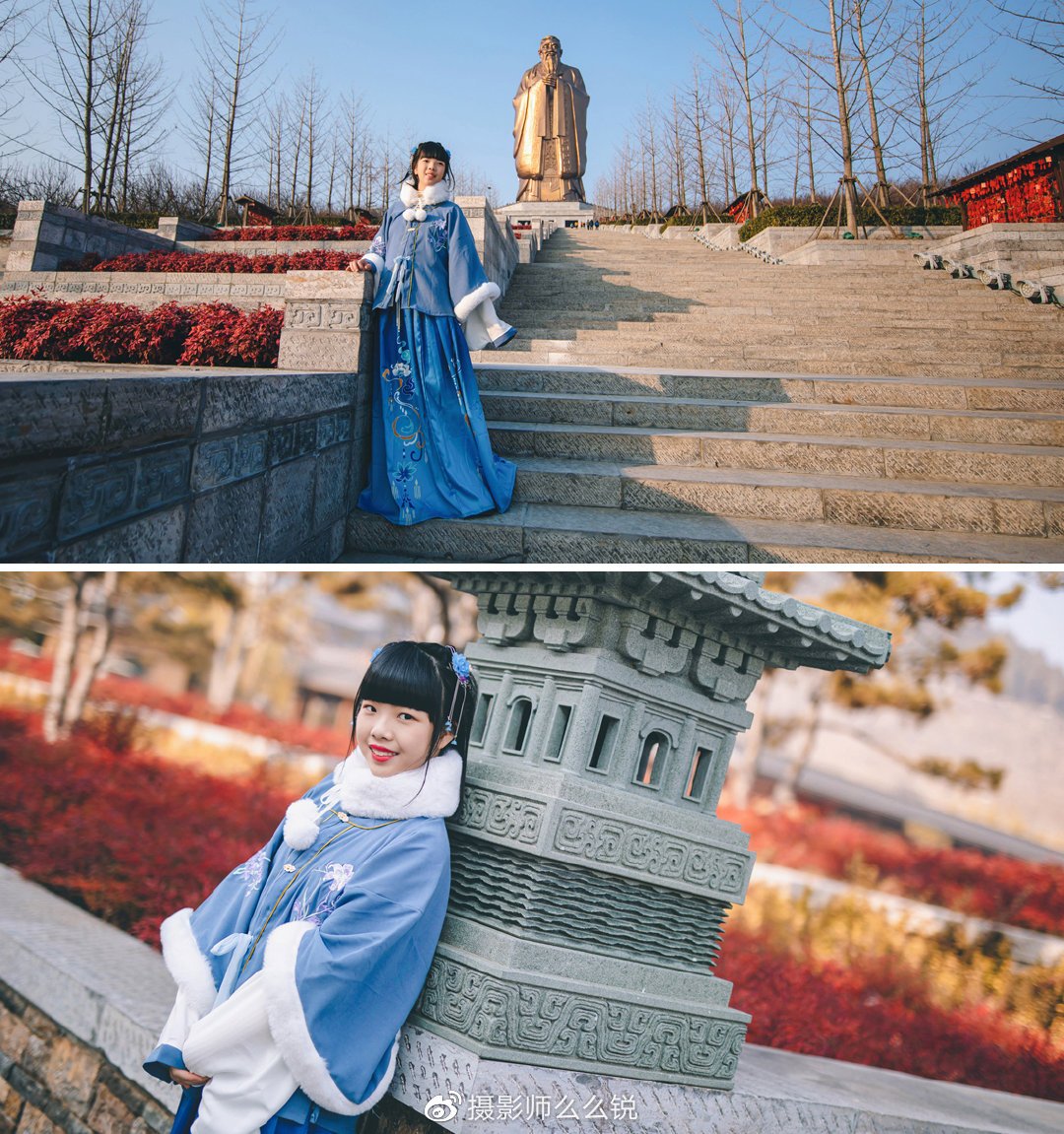
At this moment, the large-scale ritual and music performance “The Golden Voice and Jade Vibration” in the Ritual and Music Hall on the first floor of the University Hall is grandly staged. “Those who achieve great perfection are like the golden voice and jade vibration.” The golden voice represents the beginning of order; the jade vibration represents the end of order. The beginning of order is the matter of wisdom; the end of order is the matter of sainthood. The phoenix’s arrival kicks off the prelude, and a life drama of “from ordinary to sage” is slowly told. The undulating stage design and the perfect combination of sound, light and electricity show the whole process of life from babbling in childhood, studying in school, youth, getting married and starting a career, making contributions and building a career, returning home after retirement, teaching and educating people, birth, aging, sickness and death. People are deeply moved by the understanding of Confucian culture and the inheritance of Chinese culture. Miguo watched intently throughout, sometimes smiling and sometimes frowning. For children, such a condensed life drama should bring some insights to her. Nishan Sacred Land is extremely wonderful. But in addition to here, there is another unmissable place. The Nishan Academy Hotel is also a place where our family will definitely choose to stay and experience every time we come. Gray tiles, yellow walls, red pillars and wooden fences, secluded bamboo forests, and deep courtyards. As the saying goes, for elegance in accommodation, there must be the Nishan Academy Hotel. Walking here, with the two-courtyard system, lightweight tile roofs, exquisite screen walls, transparent glass and wooden gratings blending with the sunlight, it seems to be the paradise described by Tao Yuanming. The fresh air fills the peaceful valley. Wearing gorgeous Hanfu and welcoming the new year here is truly the best. Knock on the wicker gate gently and push the door to enter the courtyard. The Zen life begins here. Each guest room is a separate courtyard. The decoration is mainly in the new Chinese style. The tables, chairs and furniture are all full sets of wooden furniture. The details of writing brushes, ink, paper and inkstones are also all complete. When in the mood, start writing at any time. It is just like a quiet and beautiful farming and reading village, a place to express one’s feelings away from the hustle and bustle of the city. The path leads to a secluded place, with birds singing and flowers fragrant, cascading water flowing clearly, and laughter and voices. Time passes slowly. Passing through the courtyards one by one and going upstream along the gurgling water system. On the hillside, by the Holy Mother Spring, there is a bookstore. Spend a moment in quiet reading time, and suddenly time has a different way of unfolding. From the soul to the body, savor the emptiness of the secluded mountains and stay away from the hustle and bustle of the city. In front of you is a poetic tranquility. Wearing a Hanfu and a cloak, strolling in winter, dreaming back to a thousand years ago. Do you also want to beautifully dress up like Miguo and light up the beauty of this Spring Festival? As long as you come to Nishan Sacred Land on New Year’s Day, a thousand pieces of Hanfu are waiting for you to wear for free. Diverse experiences are waiting for your arrival. Have a great time, take beautiful pictures, and stay in a great place. Let’s bid farewell to the eventful 2020 and welcome the beautiful 2021 at Nishan! Let’s travel and take pictures with Momerui. For more travel images and photography technique sharing, please follow [Weibo @Photographer Momerui].
Embarking on a journey to the sacred land of Nishan Qufu, one is instantly transported back in time as they don the traditional Hanfu attire. The serene atmosphere and the profound respect for the ancient sages create an experience that is both enlightening and deeply cultural. As you navigate through the historical sites, each step is a testament to the rich heritage and wisdom that has been preserved for centuries. The picturesque landscapes and the tranquility of the surroundings provide the perfect backdrop for a spiritual journey, allowing visitors to connect with the past and gain a deeper understanding of the philosophical teachings that have shaped Chinese civilization. This pilgrimage is not just a visit to a place; it is an immersion into the heart of Chinese culture, where one can reflect on the values and principles that have stood the test of time.


